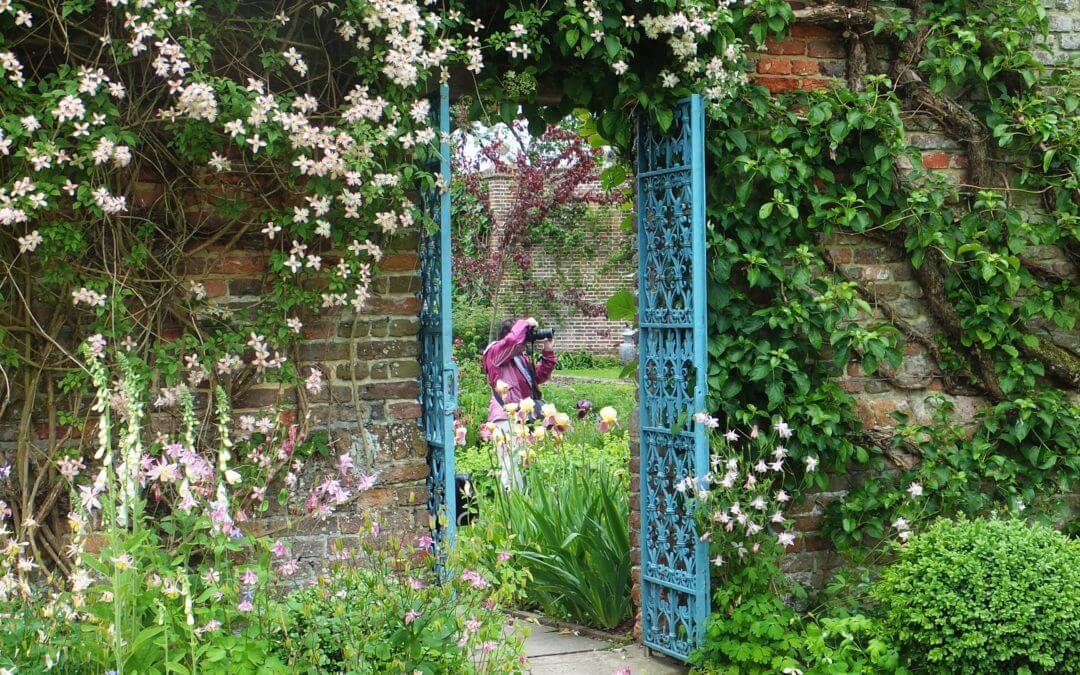There is something so wonderful about seeing clematis in flower. Exotic blooms; some the size of dinner plates, cover a trellis or wall in a broad stroke of colour. Typically we think of clematis growing flat against trellis or wall, but as long as they are given support clematis are happy to grow anywhere which includes growing up and through other plants. One option is to grow clematis and roses together with the rose acting as “the trellis” for the clematis. Depending on the bloom time of the clematis you may want them to bloom together for one big show or to bloom separately in order to provide colour for a longer period of time in your garden. Clematis are easy plants to grow with simple requirements. They like to have a minimum of six hours of sunshine per day, and they like other plants close to the base of the plant to keep their roots cool. When most people think of Clematis, they think of the deep purple of the Jackmanii’ which blooms throughout the summer. Garden centres in the spring are now promoting a much wider variety of colour, bloom type and bloom time. Now with careful selection you can have clematis in your garden from spring to fall. The flowers range from the very fragrant and small star-like blooms of the autumn clematis to nodding bellflowers, singles, doubles, and the large flat blossoms that we typically equate with the name clematis. The colours of clematis are varied from red, pink, purple, lavender, and mauve to white and yellow. Clematis are a great source of colour in the garden as each bloom lasts for a few weeks and the summer blooming varieties will produce buds from June to September so you will have a plant in bloom for several months. The spring flowering varieties differ in that they produce most of their blooms all at once early in the year but do have some blooms later in the year on the new growth they have produced. Often people will choose to grow two or more clematis together to have a mix of colours, when this is done it is important to grow two clematis from the same pruning group as they will grow into a tangle of stems and it will be impossible to distinguish from one another. There are three groups that all clematis fall into, based on when they should be pruned. Group 1 are early blooming species clematis such as clematis montana, macropetala and alpine. These plants flower on the growth produced the previous year and if pruning is necessary; for example they are only blooming on top or they are outgrowing their space. Then it should be done immediately after blooming. Group 2 are the large –flowered hybrids that start to bloom in May or June. They should be pruned back fairly hard early in the year to approximately one meter in height. If your goal is to maximize the height of the plant then only prune weak or dead stems. Group 3 consists of the late flowering varieties that bloom on the plants new growth and should be pruned early in the spring to 50 -75 cm in height. If you know the name of the clematis in your garden then it’s easy to look up what group it belongs to. The Clematis is known as the Queen of the Climbers because its flowers and colours are unsurpassed in the garden. Grown alone, with climbing roses or rambling up and over shrubs within the garden it’s a plant worth getting to know and trying several of the varieties that are now available. By: Sue Montgomery, OALA, CSLA
Recent Posts
Archives
- July 2017
- March 2017
- February 2017
- January 2017
- June 2016
- May 2016
- April 2016
- March 2016
- February 2016
- January 2016
- September 2015
- August 2015
- July 2015
- May 2015
- April 2015
- March 2015
- February 2015
- January 2015
- October 2014
- September 2014
- August 2014
- July 2014
- May 2014
- April 2014
- March 2014
- February 2014
- January 2014
- December 2013
- November 2013
- September 2013
- May 2013
- April 2013
- March 2013
- February 2013
- January 2013
- December 2012
- November 2012
- October 2012
- September 2012
- August 2012
- June 2012
- May 2012
- April 2012
- March 2012
- February 2012
- January 2012
- December 2011
- November 2011
- September 2011
- August 2011
- June 2011
- May 2011
- April 2011
- March 2011
- February 2011
- January 2011

